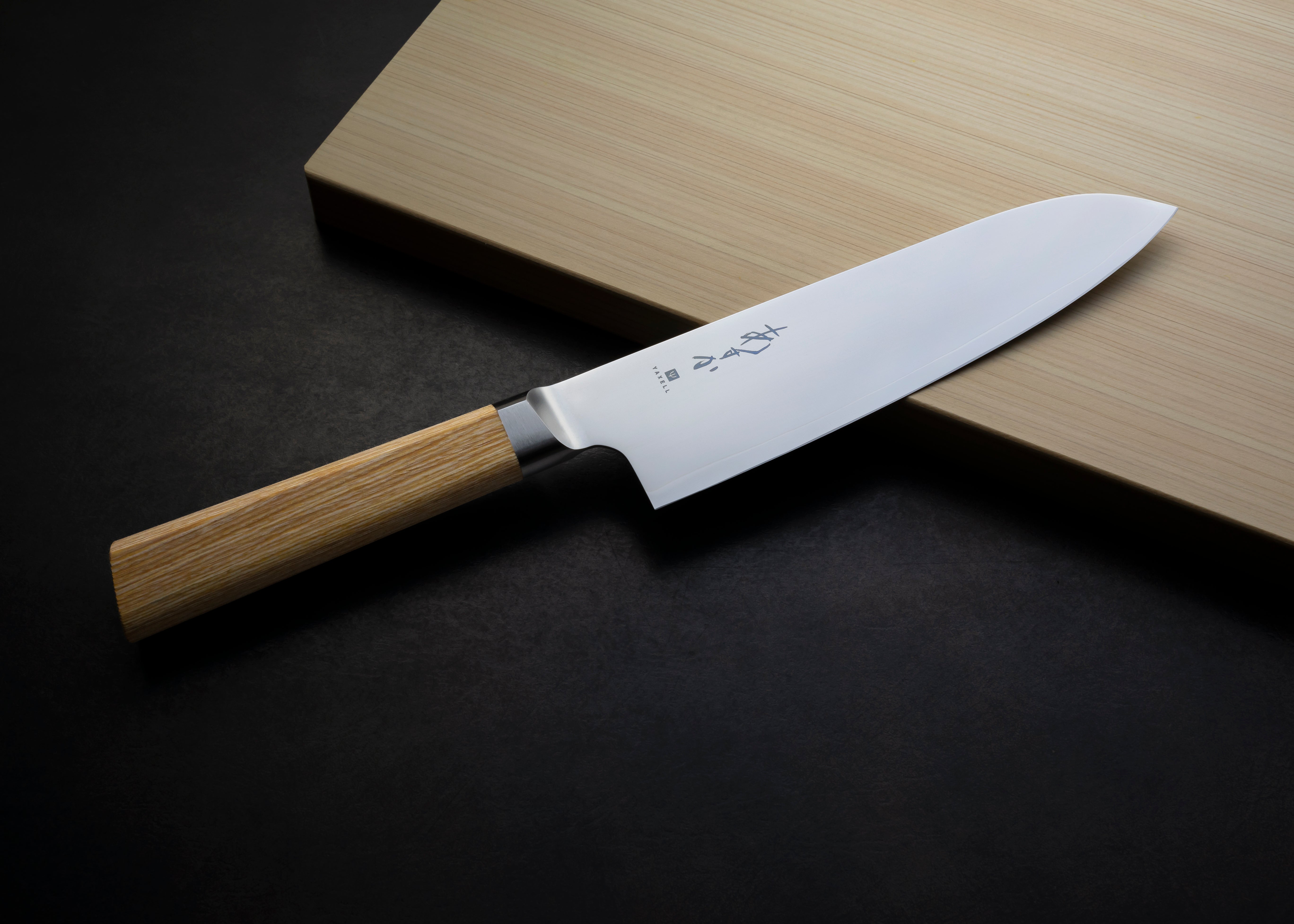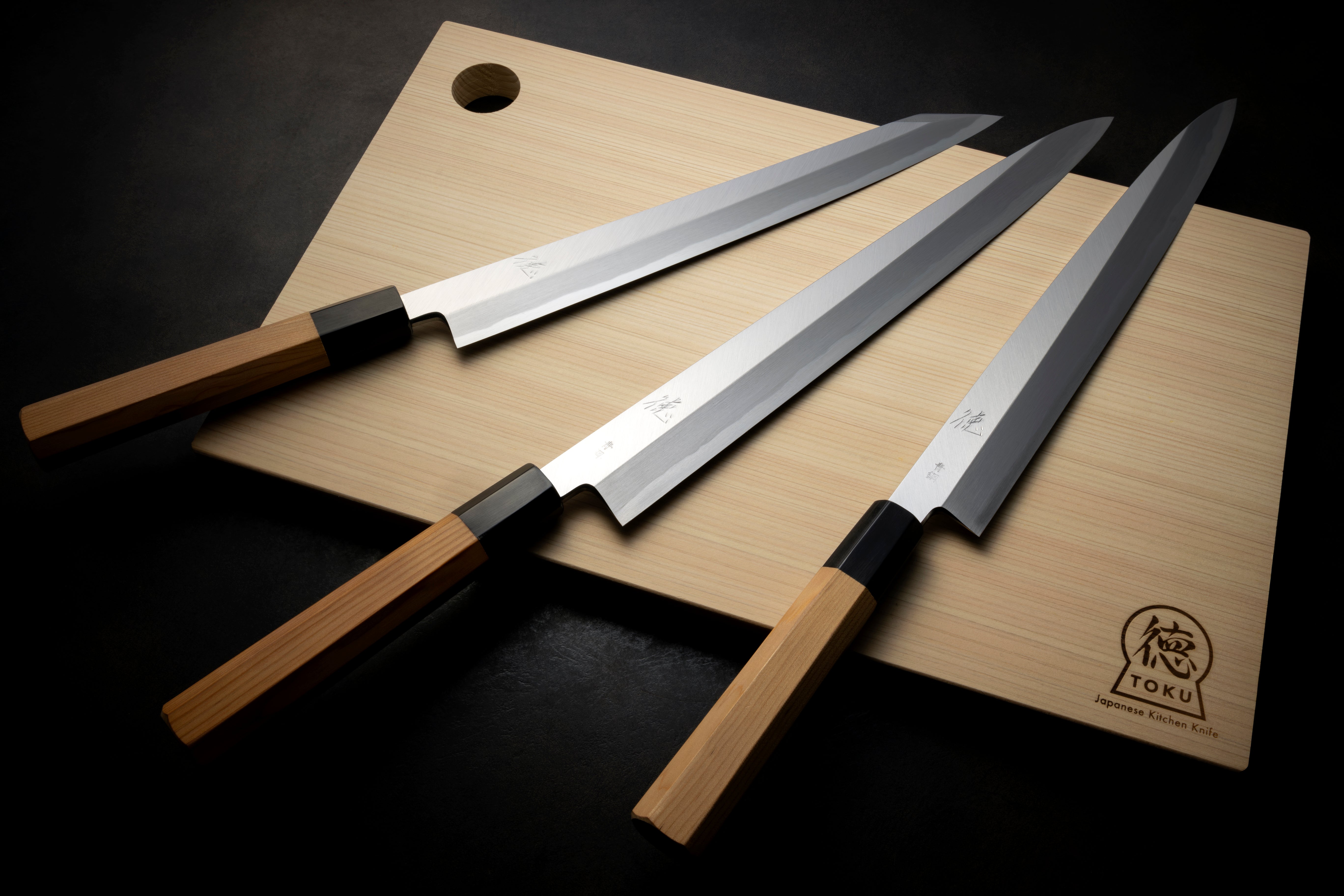
Japan Kitchen Knife TOKU | Looking for a Japanese kitchen knife? A craftsman’s guide to choosing the right one
Hello! I’m Okudaira, owner of Japan Kitchen Knife TOKU, located in Asakusa, Tokyo.
We offer a selection of handmade Japanese knives crafted by artisans from Sakai, Osaka and other renowned regions in Japan. We also provide sharpening services and sharpening workshops at our store.
Why Japanese knives are gaining global attention
Since traditional Japanese cuisine was registered as a UNESCO Intangible Cultural Heritage, global interest in the tools that support it—especially Japanese kitchen knives—has increased.
Known for their incredible sharpness, durability, and beauty, Japanese knives are now popular among chefs and cooking enthusiasts worldwide.
Japanese knives are rooted in Japan’s fish-based food culture, with specific blades tailored for different ingredients and cutting methods.
For example, a deba knife is used for filleting fish, followed by a yanagiba (also known as a sashimi knife) to slice it into sashimi.
Japan’s Three Major Knife-Making Regions
Japan has many knife-producing areas, but three stand out:
- Seki (Gifu Prefecture)
- Tsubame-Sanjo (Niigata Prefecture)
- Sakai (Osaka Prefecture)
Seki and Tsubame-Sanjo are known for mass-producing stainless Western-style knives.
Sakai, by contrast, is famous for its traditional wa-bocho (Japanese-style knives), with a long history of craftsmanship and a unique division of labor among specialists. It’s said that 90% of Japanese professional chefs use Sakai knives.
Durability
No matter where the knife is made, with proper sharpening, a high-quality Japanese knife can last for decades.
This level of durability is highly valued by chefs around the world.
Aesthetics
Japanese knives also captivate with their design—
from the popular damascus patterns to mirror-polished blades, the beauty of these tools is part of what makes cooking enjoyable.
Types of Japanese Knives and Their Uses
- Santoku: For meat, fish, and vegetables. The perfect all-purpose knife for home use. Ideal for beginners.
- Gyuto: Originally for meat but works well as a versatile chef’s knife. Preferred by those who cook frequently.
- Petty Knife: Small, easy to handle—great for fruit and detailed work. Useful as a second knife.
- Deba: For filleting whole fish. A must-have for anglers.
- Yanagiba: Also called a sashimi knife. Used to slice fillets for sashimi. Ideal for sushi lovers.
The santoku, gyuto, and petty knife are typically double-beveled, suitable for both right- and left-handed users.
Deba and yanagiba are typically single-beveled, designed for right-handed users. If you’re left-handed, be sure to look for a left-handed version.
Stainless Steel vs. Carbon Steel
Knife blades are typically made from either stainless or carbon steel.
Common stainless steels: Molybdenum, VG10, Ginsan (Silver #3), SG2, and more
Common carbon steels: SK, Yellow #2, White #2, Blue #2
Each steel has a different hardness level.
Stainless steel is rust-resistant and easier to maintain. Carbon steel requires more care, but many say it offers superior sharpness and easier sharpening.
Softer steel is easier to sharpen but dulls faster. Harder steel holds an edge longer but takes more effort to sharpen.
For professional kitchens that handle large quantities of food, harder steels are preferred.
For home use, softer steel is often more than enough.
Regardless of material, with proper sharpening, a good knife can always return to its original sharpness.
Which knife should you choose first?
If you’re buying your first Japanese knife, we recommend a santoku.
Asuka Santoku
Simple in design, lightweight, and comfortable to hold thanks to its chestnut-shaped handle.
Recommended for women, seniors, and first-time users.

Hammered Damascus Santoku
A beautiful, high-quality knife featuring hammered patterns and damascus steel layers.
It has a satisfying weight that helps cut effortlessly.
Popular among cooking enthusiasts and professionals alike.

Classic Damascus Santoku (165mm)
Not too long, not too short—just right.
The damascus pattern adds a stylish touch that can lift your mood while cooking.
Highly popular for home kitchens.

Yō Takumi Santoku
A top pick among international customers.
Its unique kiritsuke-style tip gives it a look reminiscent of a Japanese sword.
The blade features damascus patterns, and the 10-sided Japanese-style handle offers excellent grip and balance.

Have questions? Contact us via LINE
Store Information & Access
Sakaitoku Knife Shop Asakusa (Opening April 2025 )
Business hours: 10:00 - 18:00
Closed: Tuesdays and second Wednesdays
Address: 6th floor, NW Building, 1-11-4 Hanakawado, Taito-ku, TokyoMap
• 1 minute walk from the north exit of Asakusa Station on the Tobu Skytree Line
• 4 minutes walk from Asakusa Station on the Tokyo Metro Ginza Line
* Please take the elevator to the 6th floor.
* You may feel a little intimidated, but it's okay to just "look around" or "listen"!
Follow Us on Social Media
We introduce tips on how to choose and sharpen knives through videos and photos on YouTube and Instagram .
• ▶ ︎ [YouTube channel here ]
• ▶ ︎ [ Official Instagram here ]



Leave a comment
This site is protected by hCaptcha and the hCaptcha Privacy Policy and Terms of Service apply.